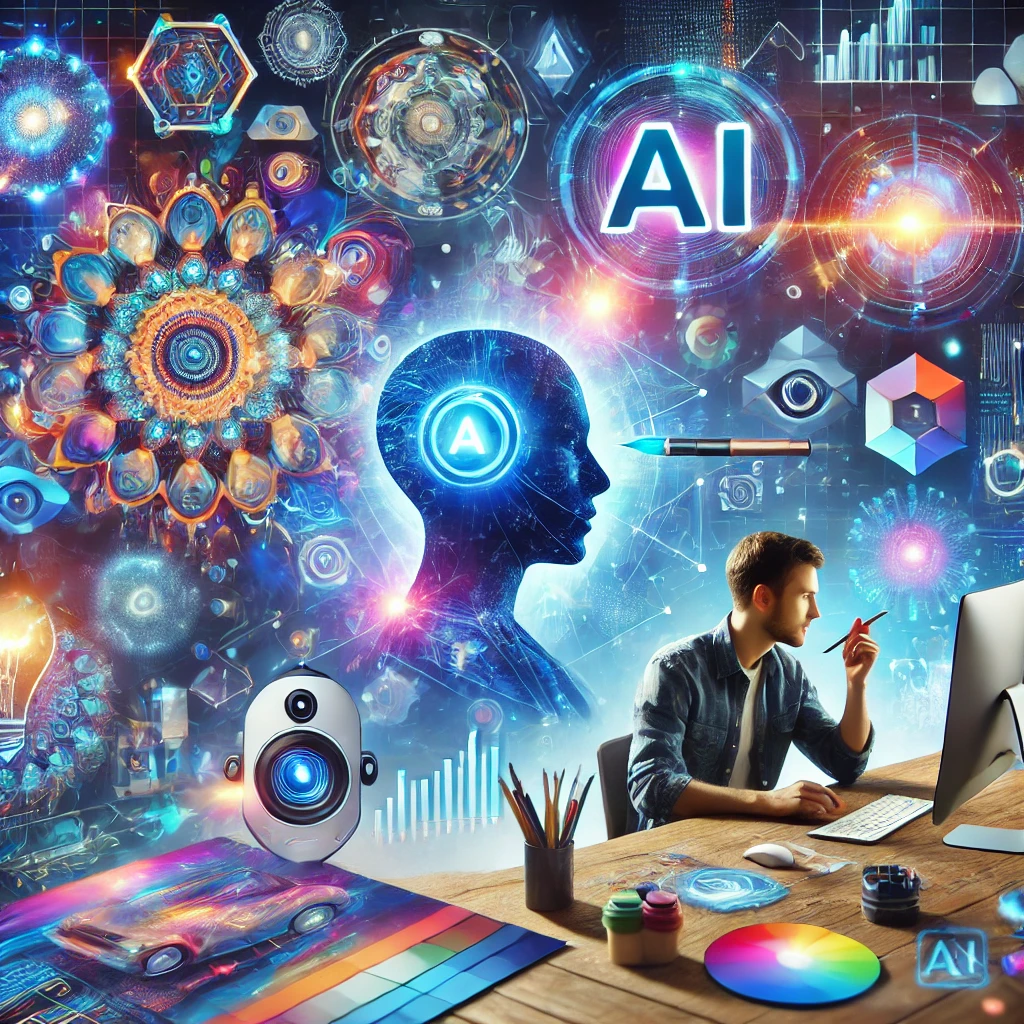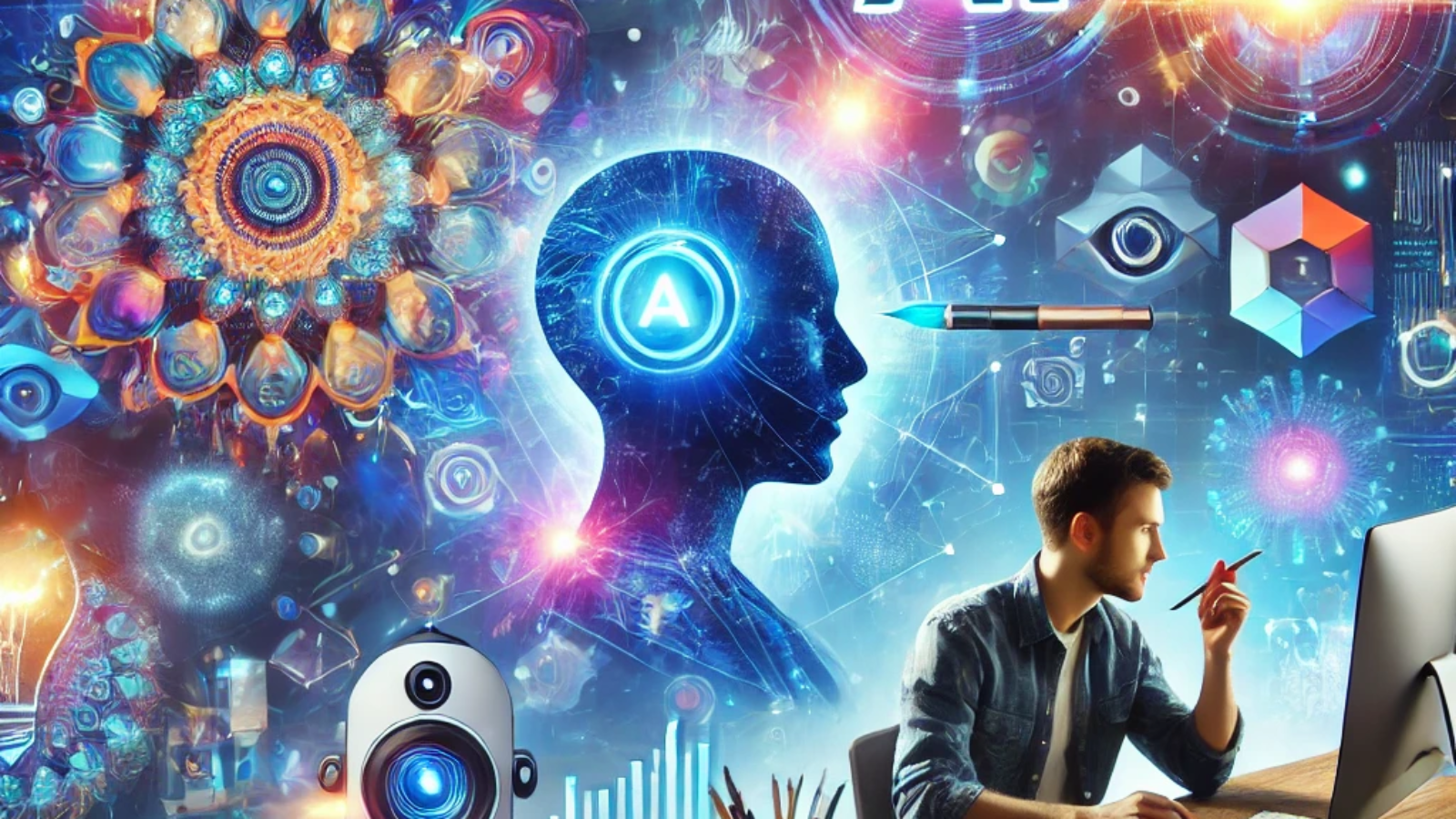“The Rise of Generative AI: How 2024 is Revolutionizing Creativity and Innovation.”
Table of Contents
1:
-
**Introduction**
– Caption: The Rise of Generative AI
Overview of How AI Impacts Creativity and Innovation
2. **Understanding Generative AI
– What is Generative AI?
– Historical Context: From Rule-Based Systems to Neural Networks
Technologies That Power Generative AI Include GPT, DALL-E, and More
3. **Creativity in Generative AI
Computer-generated art: Transformations in the visual arts
• Music Composition: Machines as Fellow Collaborators
– Literature and Writing: AI as Co-Authors
– Video and Film Production: The New Era of Storytelling
4. Generative AI in Innovation
– Product Design: Rapid Prototyping with AI
AI in Architecture – Shaping the Future
Early, this has changed. – Generative AI’s Role in Scientific Inquiries
– Artificial Intelligence in Business and Marketing: Creative Campaigns and Strategies
5. **_ethical considerations and challenges_
– Ownership and Copyright Issues
– The Misinformation Threat and Deep fakes
– Prejudice in AI-generated content
– The Balance Between Human Creativity and AI
6. Case Studies: How Generative AI Works In Real Life
.
Tonight we are going slightly far from the prosodic generation
– Google’s MusicLM: Redefining Music Creation
– With Content Generation in Story, you can do much more than just text generation.
– AI-powered fashion: Every super-power item
7. **The Future of Generative AI**
– The Next Frontier: AI in Augmented and Virtual Reality
– Generative AI in Education: Learner Personalization
– The Potential for AI to Revitalize Other Industries
– Long-Term Effects on Human Creativity
8. **
– Reflections on 2024: A Landmark Year for Generative AI
Human-Centered Creativity and Innovation in an AI World.
—
1. Introduction
Generative AI: Formation
This is just one of the strongest signals and techno trends over the past couple of years to continuously affect most areas of human life. Actually, 2024 happens to be the phase of exemplification, particularly in the place of generative AI. Machines are no longer executing tasks; they are creating through their very selves. Whether the creation of fancy images, music, product designs, and now even literature, it appears that the sky is not only the limit. Apparently, bounds of creativity and innovation are completely redefined using generative AI.

Overview of How AI Affects Creativity and Innovation
With development still at an incremental stage, the creative applications of artificial intelligence multiply almost exponentially. Generative AI systems, driven through deep learning algorithms, have only very recently started to imitate and, in some cases, take over from human efforts related to the generation of new and innovative content. This paper discusses ways in which generative AI has transformed creativity and innovation, thus marking 2024 as a landmark year for both.
2. Grasping Generative
What is Generative AI?
Generative AI forms a subset of artificial intelligence. Unlike current AI, which works by responding to a fixed set of rules, generative AI utilizes neural generative models, specifically generative adversarial networks and transformers, to deliver new, unique outcomes in the forms of computer graphics, music, or text.
Description: A diagram depicting the basic structure of a generative adversarial network (GAN), demonstrating the interaction between the generator and discriminator.
Historical Background: From Rule-Based Systems to Neural Networks
Truly, this reflects overnight development from the rule-based simplistic systems of the early stages to the real sophisticated generative models of AI at present. The very initial AI systems were, in fact, considerably based on such rules conceived by humans and proved to be really insufficiently creative. Neural networks, especially deep learning, changed that, providing machines with a way to learn from large sets of data and come up with humanly unimaginable content.
Key Technologies Behind Generative AI: GPT, DALL· E, and Beyond
Key generative AI models like the GPT-4, DALL-E 3, and others have continued experiencing huge improvements in 2024. These models are data giants, trained on billions of parameters, and are capable of generating very realistic responsive information that is somehow contextually relevant. GPT-4 has easily been credited with great defamiliarization in processing the natural language of this generation, while DALL-E 3 continues to push the boundaries in mankind’s visual creativity.

3. Creative Generative AI
AI-Generated Art: The New Breath of Official
Generative AI has deeply affected the visual arts. Now, artists can work together with AI to produce exquisite works that fuse intuitive human work with the precision of the machine. If anything, the availability of AI-generated art has democratized art both in its creation, the processes of cultural production, and in touching even the nature of aesthetic experience itself.
Music Composition Machines as Adjuvants
Music composition is another area in which sizable advancements with generative AI are made. Tools such as MusicLM by Google have made great opportunities for co-creativity in content-creating musicians with machines, creating outstanding and unique compositions that sometimes go beyond the musical minds we possess. Analyzing large-scale datasets of music, these AI systems learn different patterns and styles in the mission to generate original pieces that, to some extent arguably, are of appropriate genre and mood.
Assigned to: Customer key Today AI and ML science
Generative AI systems, like the one in GPT-4, are now flexed in literature to create poignant tales, support writing creative texts, and, in a broader sense, even author whole novels. Now, there is AI, side by side with the writers, giving dialogue and, in fact, even providing solutions for writer’s block, among other things. Such author-AI collaboration radically shifts what we think the nature of narration is.
Video and Film Production: The New Age in Storytelling
It is also transforming video and film production. AI can create real special effects, animations, and part—and parcel—even whole scenes from any simple prompt that a person issues. This is not only helping in the working of the production line but is also opening up any possibility of trying around many new forms of storytelling.
4. Generative AI with Innovation
The Design of the Product: AI Rapid Prototyping
AI’s generative design systems work to accelerate the prototyping process by enabling a designer to quickly come up with several design concepts and iterate the process. The main result of such design is represented by AI tools that can analyze the given functional requirements and given aesthetic preferences of a design and come up with solutions that will optimize form and function. Innovative product designs are really coming into the market, especially for industries like automotive, consumer electronics, and fashion.

AI in Architecture: Shaping the Future
Another field in which generative AI is very active is that of architecture. AI tools enable architects in finding new ways for designing, optimize structural elements, and create structures that could even be rather sustainable. Analyzing materials data, environmental conditions, and human behavior helps make architecture new and functional.
Demystifying the role of generative AI in scientific discovery
This is where generative AI has really shone, even enabling breakthrough and novel research in the targeted fields of drug discovery, materials science, and genomics. These models are able to generate hypotheses, design experiments, and even find new molecular compounds. This increases the rate of innovation and empowers scientists to work on more difficult problems, and at levels that are more productive.
Application of Artificial Intelligence in Business and Marketing: Creative Campaigns and Strategies
Companies are turning more and more to the exciting world of generative AI to figure out business messages really speaking to their intended target. AI-produced content ranges from personalized ads to dynamic visuals, enabling business companies to interact with their potential customers in a much better way. It is also helpful in studying the market trends, and with this, soon one could be able to draw innovative plans in order to clock past competition.
5. Ethical Consideration and Challenges
Ownership and Copyright Close Ended
The rise of generative AI brings questions pertaining to ownership and copyright. The creation of any piece of art by an AI suggests the ownership of generation. Does this belong to the developer of the AI, the user who gave it a command, or the AI? These questions have continued to swell in relevance as AI content is becoming more commonplace.
The Threat of Deep fakes and Misinformation
As laudable as the benefits of generative AI are, it is accompanied by a series of hazards, mostly in the form of deep fakes and misinformation. AI-generated content can bring into being very realistic but false images, videos, or even fake information that may be injurious to society. This necessitates a technological-regulatory approach in confronting these challenges.
Bias: Human in AI-Generated Text
AI is considered to be as good as datasets used in its training; hence, if bias is embedded in the training data, then most probably the AI engine is reflected in tendencies in the decisions and actions it makes. In more general terms, this relates to generative AI providing new functionality directed towards preserving certain stereotypes or persistent reinforcement of the existing inequality. Thus, fairness and inclusiveness in AI-generated content is a critical challenge for
developers, and users themselves.
The Balance Between Human Creativity and AI
Will AI replace human creativity someday, considering the better capability of generating meaningful or creative content in the input of AI, or does AI just enhance human creativity? Finding this balance is essential to make sure that in creative areas, the fundamental nature of creativity continues being a distinctly human thing.
6. Case Studies: Generative AI in Action
Open AI’s DALL-E and How It’s Already Changing Digital Art
Open AI’s DALL-E has to do with digital art, as it makes ways for artists to come up with extremely detailed and imaginative images based on descriptions. It democratizes the very process of making art into something achievable by people, with or without formal training, to generate quite good visual material. The impact of DALL-E is quite par excellence in the confines of art and equally, in all other possible applications, whether it is marketing, design, or entertainment.
MusicLM: Defining the Generation of Music with Google
Another example of changing the game is this other form of generative AI: MusicLM by Google. MusicLM enables users to generate music from textual prompts to help create original, musically cohesive music. This is one way in which musicians, composers, and producers worldwide are expanding outside limits, one example of human-AI collaboration.
ChatGPT for Content Creation: Beyond Simple Text Generation
ChatGPT is indeed an advanced text-based model that can be used for content input. What started as simple text production has grown to be a versatile tool for making content. A new engine is evolving for content creators: from article generation into blog posts to scriptwriting and dialogue — ChatGPT assists content generators to become more effective at releasing new stories.
AI-Driven Fashion: Clothes of Tomorrow Designed
The fashion industry is increasingly relying on generative AI for clothes design styled with a twist of sustainability. Analyzing new trends in materials and people’s preferences, AI systems here create ideas for modern and innovative designs that will fit in that criteria. This offers a definite competitive edge for these brands in a very fast-paced industry.
7. Generative AI in the Future Making Augmented and Virtual Reality More Real With AI
Just as it is with generative AI, its new evolutions in union with AR and VR are bringing about extremely new possibilities for the world of immersivity. AI-created environments, characters, and narratives presented by means of AR and VR change previous approaches to gaming, education, and entertainment into ones that are customized and interactive.
Generative Artificial Intelligence in Education:
Understanding Learner Characteristics In educational practices, generative AI designs learning experiences on behalf of students. AI-powered tools develop lessons, assessments, and feedback that are matched to different learning styles and paces for every target group. This will revolutionize education to make it extremely adaptive and student-centered. The Potential of Revolutionizing All Other Industries Other than using generative AI as a tool for present-day creativity and innovation, its application will push the frontiers of various industries such as healthcare, finance, and logistics. Generation of new solutions and optimization of several processes by AI is poised to be a huge driver of efficiency and innovation across the board, leading to most advancements in these areas. Effects on Human Creativity Over the Long Run Looking forward, much argument seems to be put forth regarding what generative artificial intelligence spells for the future of human creativity. Some take it fearfully, as being a phenomenon of unconquerable might in human creativity with time, while others believe that it would just be but a tool to reinforce and extend our already existing creative powers. It will manifest both human and machine creativity in a harmonizing force that will develop new art and modes of innovative expression. Imagery Idea: depicting future landscapes influenced by human/AI cooperation; these might be literally on various creative projects, meaning the future of creativity.
8. Conclusion .Reflecting on 2024:
The Moment Generative AI Hits Mainstream Which gives 2024 technology, currently led by generative AI, an ever-growing force across many fields. The AI explosion suffered by creativity and innovation means the business, musical, and artistic landscapes are about to shift irrevocably. Make Creativity and Innovation Friendly to AI End ANGER A common theme across all these scenarios is an evolutionary relationship between human creativity and AI. The challenge will be to handle the power of the generative AI yet stay humane, keeping the quintessence of the humanness of creators at its core. The future appears to be defined as accepting AI as a method in artistic creation and moving further ahead in assisting the flourishing of human artistic creativity in a way that ensures ethical formalities and collaborates with AI to its fullest. Image Idea: A closing image of a horizon melting the digital world into the natural world, symbolizing the blurred lines in which AI has integrated itself into the fabric of human creativity.

 Cart is empty
Cart is empty 
Leave A Comment